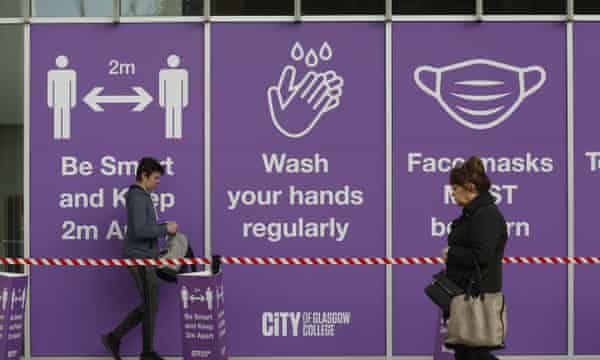The number of people who have died in the UK as a result of Covid-19 has gone up by 143 in one day, the highest increase in four months.
A further 17,234 cases of Covid-19 have been confirmed in the UK, according to new government figures based on laboratory tests. The figure for deaths is the highest daily reported since 164 deaths were reported on 10 June.
It brings the total number of cases in the UK to 634,920 and is a major escalation on the 13,972 new cases confirmed on Monday. The figures were accurate up to 9am on Tuesday morning.
Dr Yvonne Doyle, medical director of Public Health England, said it was “hugely concerning” that the trend in Covid-related deaths was starting to rise quickly.
“We have seen cases increasing especially in older age groups, which is leading to more hospital admissions,” she added.
“This is a stark reminder for us to follow the guidelines. Importantly, do not mix with others when unwell.”
The death toll is heading towards 200 a day, which Boris Johnson’s chief scientific advisers, Patrick Vallance and Chris Whitty, had warned would happen by mid-November if a surge three weeks ago continued unchecked.
The figures were described as “utterly grim” by the Labour deputy leader, Angela Rayner, who tweeted that local lockdowns “have clearly not worked”.
“The PM has no plan to get a grip of this crisis or get us through the winter. Abject failure.”
Graham Medley, professor of infectious disease modelling, at London School of Hygiene and Tropical Medicine, warned at the current rate of infections it was likely there could be 400 deaths a day by the start of next month.
He said: “The people who died today were infected two to three weeks ago, and the people who will die in two to three weeks’ time are among those infected today. The doubling time of infections has been about 10 days for the past month, so it’s quite likely that we will have about 400 deaths per day early November.”
David J Hunter, professor of epidemiology at Oxford University, said Tuesday’s high figure was likely to be a “catch-up effect” as is usual after the weekend, but three-day and seven-day averages still showed “a steady, inexorable rise in hospitalisations, ICU Covid bed occupancy, and deaths over the last month and leave no doubt the second wave is well advanced”.
Dr David Strain, of the University of Exeter Medical School, also cautioned that one data point does not represent a trend. “However, based on the increased number of cases, first in younger adults, moving into older adults three weeks or so ago, this week is when we would have anticipated the rise in death rates to start occurring,” he said.
Strain said it was clear the rule of six was not working, as it allows infections to be carried into multiple households where further transmission occurs. “The idea that you can mix freely with five other households is nonsense, basically,” he said.
Separate figures published by the UK’s statistics agencies show there have now been 58,500 deaths registered in the UK where Covid-19 was mentioned on the death certificate. The data from the Office of National Statistics recorded that there were 321 Covid-19 deaths in the week ending 2 October – with north-west England recording the highest number, at 106.
The region has been the focus of the most severe level of new lockdown restrictions unveiled by the Westminster government on Monday. So far, the Liverpool city region is the only place to move into the highest tier 3 level, with pubs and bars closed, and a ban on mixing between households in almost all circumstances.
The region has also agreed to close gyms, leisure centres, casinos, betting shops and adult gaming shops.
Source: The Guardian

